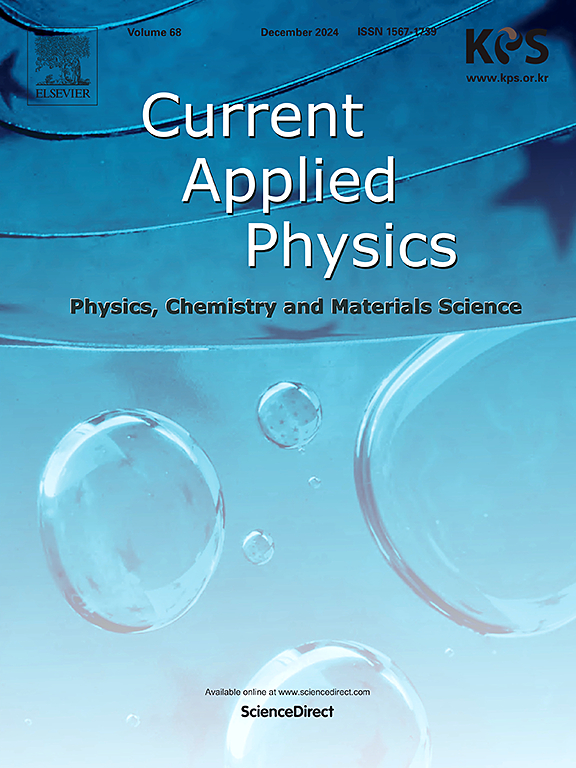常压微波蒸汽等离子体甲烷蒸汽重整环保制氢研究
IF 3.1
4区 物理与天体物理
Q3 MATERIALS SCIENCE, MULTIDISCIPLINARY
引用次数: 0
摘要
氢(H2)作为一种清洁燃料和未来的关键能源,在发电、清洁运输和化学合成方面的应用越来越广泛,越来越受到人们的关注。为了满足日益增长的对氢的需求,近年来开发了各种生产方法。在这项工作中,蒸汽等离子体重整及其与催化重整的结合被开发并考虑解决传统技术的局限性,如高能耗和显著的二氧化碳排放。在不同条件下,蒸汽等离子体重整反应速度快,CO2排放量低,而催化重整反应CO2排放量高。此外,蒸汽等离子体与催化重整相结合提高了CH4转化率和H2产率,但导致CO2排放量增加。值得注意的是,蒸汽等离子体中CH4重整的性能主要受蒸汽碳比(S/C)的影响。在功率为6 kW、S/C比为4.7时,实现了CH4转化率、H2产量和最小CO2产量的最佳性能平衡。这些结果突出了蒸汽等离子体重整作为清洁氢气生产的一种有前途的方法,特别是对于需要减少二氧化碳排放的应用,如绿松石氢和合成气生产。本文章由计算机程序翻译,如有差异,请以英文原文为准。

Methane steam reforming for eco-friendly H2 production using atmospheric-pressure microwave steam plasma
Hydrogen (H2) is gaining attention as a clean fuel and a key future energy resource for the future, with expanding applications in power generation, clean transportation, and chemical synthesis. To meet the growing demand for hydrogen, recently, various production methods have been developed. In this work, steam plasma reforming and its combination with catalytic reforming were developed and considered to address limitations of conventional techniques, such as high energy consumption and significant CO2 emissions. Under various conditions, steam plasma reforming demonstrated rapid reaction kinetics and low CO2 emissions, whereas catalytic reforming resulted in higher CO2 emissions. In addition, the combination of steam plasma and catalytic reforming enhanced CH4 conversion and H2 yield but resulted in increased CO2 emissions. Notably, the performance of CH4 reforming in steam plasma was primarily influenced by steam-to-carbon (S/C) ratio. Optimal performance, balancing CH4 conversion, H2 yield, and minimal CO2 production, was achieved at an S/C ratio of 4.7 with 6 kW of power. These results highlight steam plasma reforming as a promising approach for clean H2 production, particularly for applications requiring reduced CO2 emissions, such as turquoise hydrogen and syngas generation.
求助全文
通过发布文献求助,成功后即可免费获取论文全文。
去求助
来源期刊

Current Applied Physics
物理-材料科学:综合
CiteScore
4.80
自引率
0.00%
发文量
213
审稿时长
33 days
期刊介绍:
Current Applied Physics (Curr. Appl. Phys.) is a monthly published international journal covering all the fields of applied science investigating the physics of the advanced materials for future applications.
Other areas covered: Experimental and theoretical aspects of advanced materials and devices dealing with synthesis or structural chemistry, physical and electronic properties, photonics, engineering applications, and uniquely pertinent measurement or analytical techniques.
Current Applied Physics, published since 2001, covers physics, chemistry and materials science, including bio-materials, with their engineering aspects. It is a truly interdisciplinary journal opening a forum for scientists of all related fields, a unique point of the journal discriminating it from other worldwide and/or Pacific Rim applied physics journals.
Regular research papers, letters and review articles with contents meeting the scope of the journal will be considered for publication after peer review.
The Journal is owned by the Korean Physical Society.
 求助内容:
求助内容: 应助结果提醒方式:
应助结果提醒方式:


